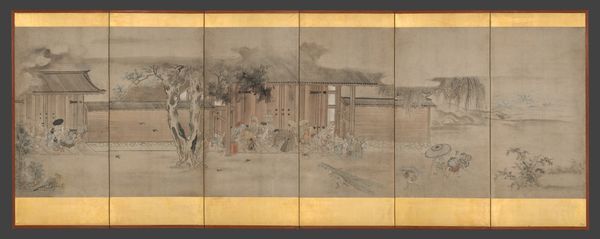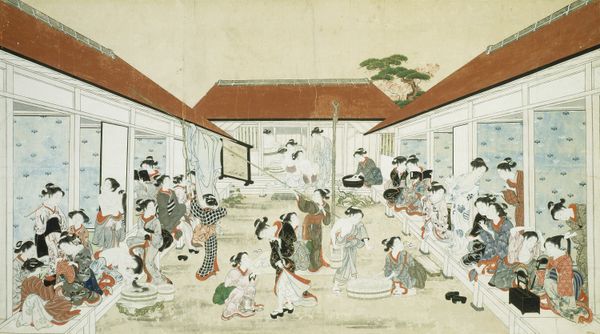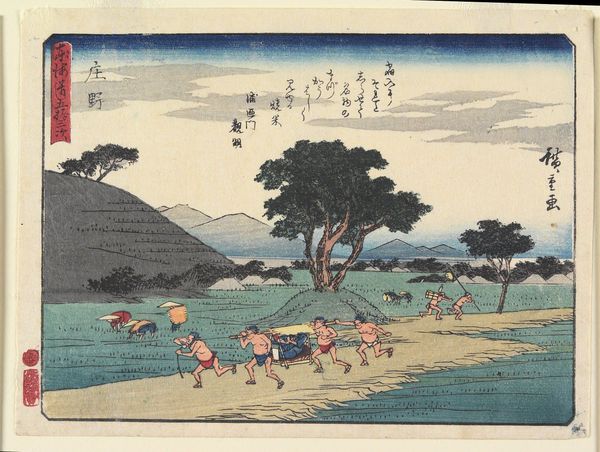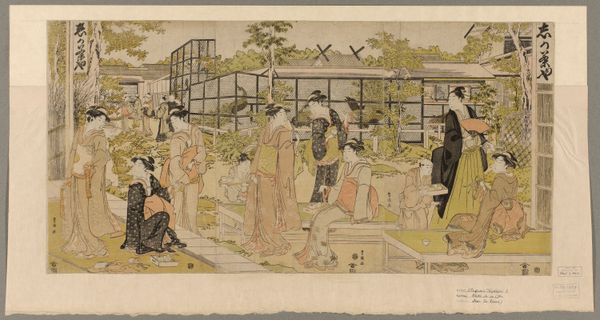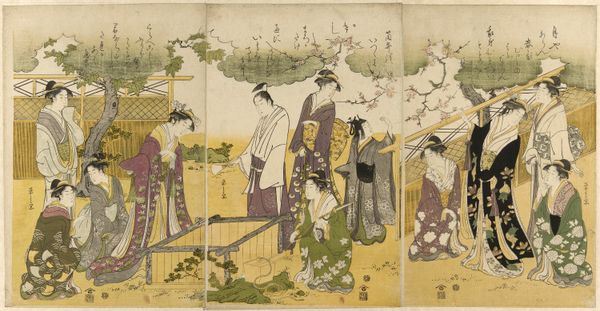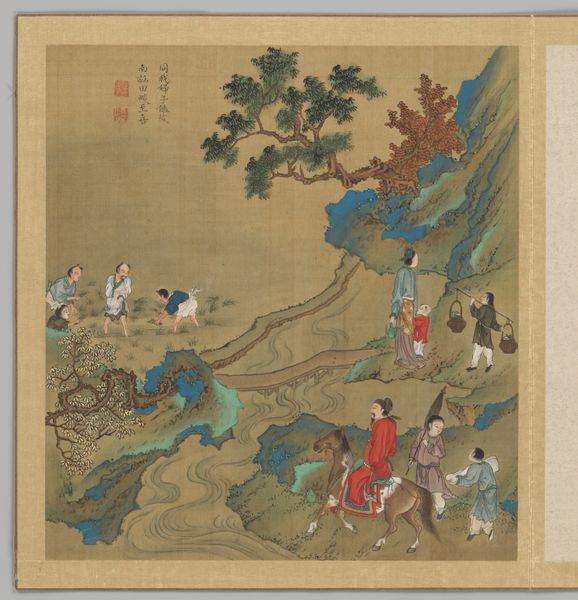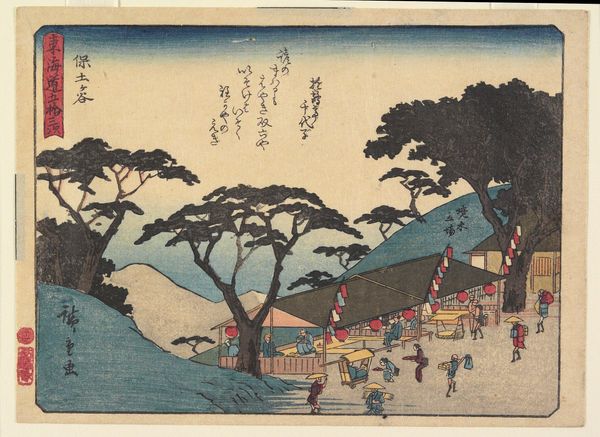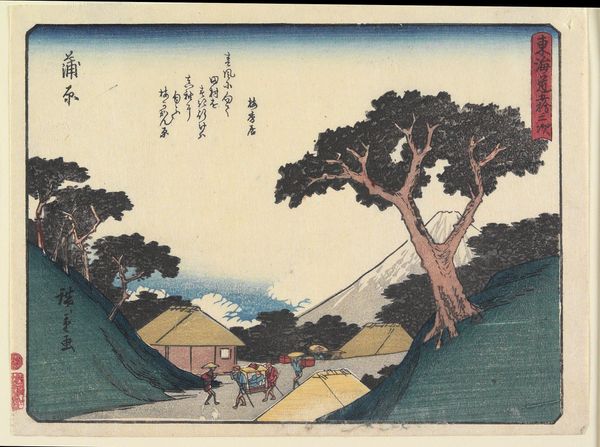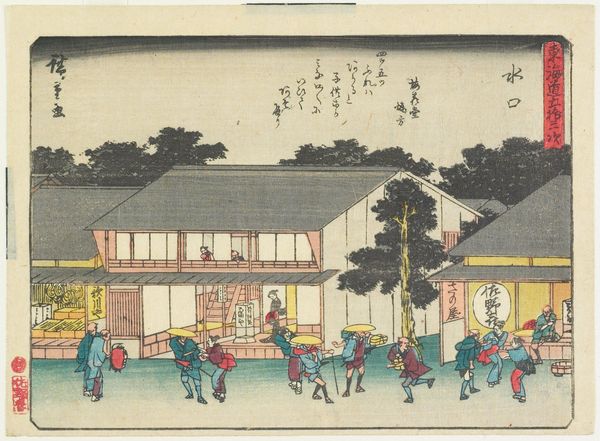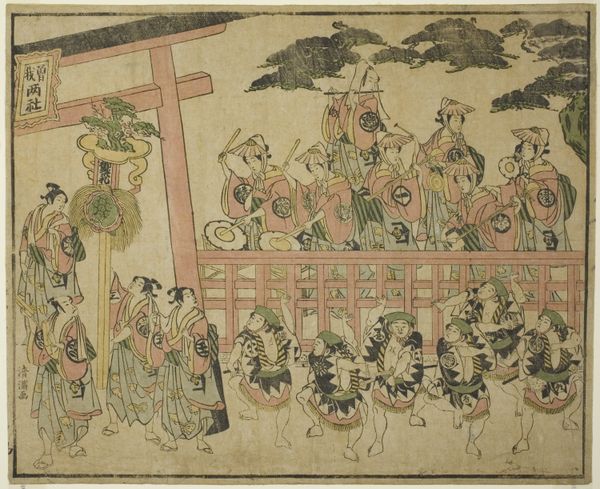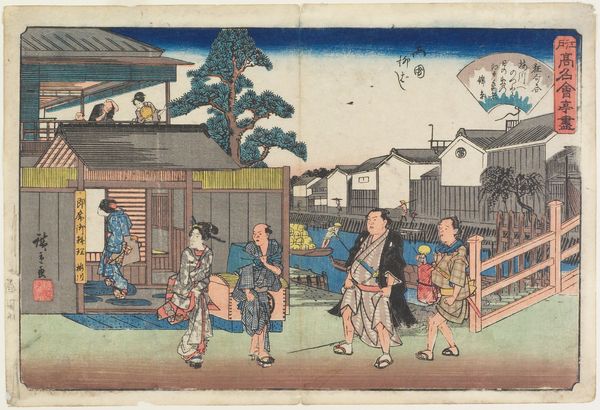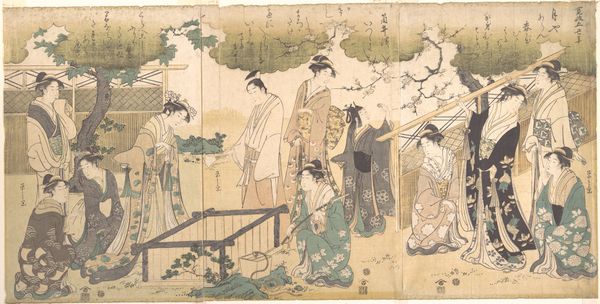
Events Throughout the Twelve Months of the Year late 17th - early 18th century
0:00
0:00
painting, watercolor
#
water colours
#
narrative-art
#
painting
#
asian-art
#
japan
#
watercolor
#
watercolour illustration
#
genre-painting
#
watercolor
#
yamato-e
Copyright: Public Domain
Curator: Let's turn our attention to a screen painting entitled "Events Throughout the Twelve Months of the Year," attributed to the Tosa School, dating from the late 17th to early 18th century. Editor: My immediate impression is that of a vibrant, miniaturized world, painted with a delicacy that belies the obvious labor involved. It looks like watercolor, and I’m wondering about the paper it’s painted on—you can see the gold leaf too. The material components must have played a big part in its commissioning. Curator: Absolutely. The Tosa School was renowned for its revival of Yamato-e, a classical Japanese painting style. This work exemplifies its refined techniques and subject matter, depicting courtly life and seasonal festivals and how that all worked its way down the social chain, becoming ‘the events of the year.’ It became crucial to how different social levels co-mingled, as well. Editor: Yes, and notice how the materials amplify this refinement. The delicate watercolor, carefully applied—it must have taken incredible precision. I imagine this piece reflecting the patron’s sophistication and taste—a statement about wealth and control of resources, of course. Gold wasn't exactly available to just anyone! The support would have had to be very strong to accept the labor input, the pigments... It really speaks to this demand for an opulence that’s understated and elegant. Curator: Precisely. The work's social function goes beyond mere decoration; it visualizes and reinforces the cultural norms and hierarchical structure of the time. We see scenes of rituals, leisure, and social interactions—essentially, a painted calendar of societal expectations. This wasn’t simply art for art’s sake. Editor: And considering how these watercolor paintings had to have been mixed by hand and bound with a medium… it speaks to me of guilds. Who mixed those colors and for whom? Curator: A very pertinent point about labor conditions! Considering both the elite lifestyle represented and how something gets crafted, this contrast gives depth to how we might think about the painting. It represents a moment in time, the seasons passing and society's cycles – quite a package for an artwork like this. Editor: Indeed. Analyzing its materials reveals so much about the labor and production interwoven with elite taste. A great look!
Comments
minneapolisinstituteofart about 2 years ago
⋮
This handscroll depicts scenes associated with each of the twelve months. The first scene, shown on the right, shows a pair of traveling entertainers who go door to door at New Years. Their lively dance to the accompaniment of the tsutsumi, a small drum held on the shoulder, was filled with exaggerated gestures and light hearted puns, to the great amusement of the townspeople. Their occasional exclamations of "Mansai! Mansai!" (Long Life! Long Life!) were felicitous wishes for a healthy and prosperous year. The second scene, represents the Hatsuuma Festival, held on the first "day of the horse" in the second lunar cycle. On that day, people visited Shinto shrines in order to offer prayers to Uka-no-mitama, the deity of grain, in hopes of ensuring a successful planting season.
Join the conversation
Join millions of artists and users on Artera today and experience the ultimate creative platform.
